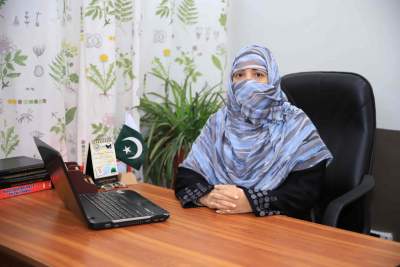-
NameMrs. Shazia Habib
-
Personal
Name: Shazia Habib
Father name: Habib Rasool
Date of birth: 12-01-1979
Marital status: Married
CNIC : 17301-1258311-2
Contact number: 0333-9109682
Email id : shaziahabib@gmail.com
-
Experience
Date of joining UET: 03-04-2006
(16 years plus teaching experience till date in UET)
-
Qualification
M-Phil (mathematics) AWKM
M.Sc. (mathematics) UOP
M.Ed. (IER) UOP
-
Brief Statement of Research Interest
I’ve worked on numerical methods of solving ODEs . I have also worked on perturbation methods for nonlinear ODEs.
In future I’m interested to work on artificial neural networks (ANNs).
Artificial neural networks (ANNs) computer networks are biologically inspired. ANNs are widely used for a variety of problem-based processes and have three layers: input, hidden, and output. It covers various aspects of MLPs, structure, algorithm, pre-processing data, overlays, and sensitivity analysis.
ANNs are technologies based on brain research and the nervous system. These networks mimic the biological neural network but use a reduced set of ideas from biological neural systems. Specifically, ANN models mimic the electrical activity of the brain and nervous system.
Some of the background work of the artificial intelligence networks (ANNs) took place in the late nineteenth and early twentieth centuries. This included mainly the work of different races in physics, psychology, and neurophysiology. This previous work emphasized general ideas for reading, visualization, positioning, etc., and did not include specific mathematical models of neuron function. This new development has revived the field of neural networks. Over the past two decades, many papers have been published and many different types of ANNs have been investigated. Neural networks have been used in a variety of fields including aerospace, automotive, banking, defense, electronics, entertainment, finance, insurance, manufacturing, medical, oil and gas, speech, security, communications, transportation, and the environment. In the natural environment, the ANN models first came into use in the early 1990s, but became more popular since the late 1990s.

